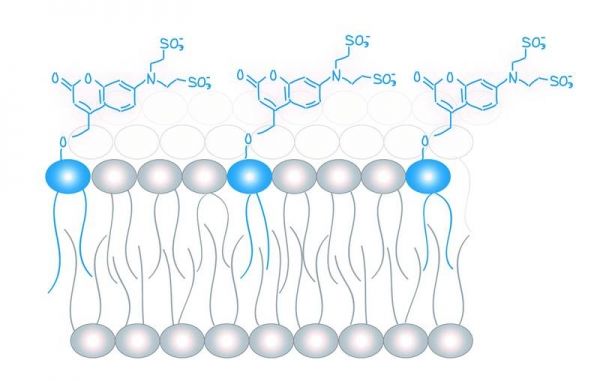Lipids, or fats, have many functions in our body: They form membrane barriers, store energy or act as messengers, which regulate cell growth and hormone release. Many of them are also biomarkers for severe diseases. So far, it has been very difficult to analyze the functions of these molecules in living cells. Researchers at the Max Planck Institute of Molecular Cell Biology and Genetics (MPI-CBG) in Dresden and the Leibniz Research Institute for Molecular Pharmacology (FMP) in Berlin have now developed chemical tools that can be activated by light and used to influence lipid concentration in living cells. This approach could enable medical doctors to work with biochemists to identify what molecules within a cell actually do. The study was published in the journal PNAS.
Every cell can create thousands of different lipids (fats). However, little is known how this chemical lipid diversity contributes to the transport of messages within the cell, in other words, the lipid code of the cell is still unknown. This is mainly due to the lack of methods to quantitatively study lipid function in living cells. An understanding of how lipids work is very important because they control the function of proteins throughout the cell and are involved in bringing important substances into the cell through the cell membrane. In this process it is fascinating that only a limited number of lipid classes on the inside of the cell membrane act as messenger molecules, but they receive messages from thousands of different receptor proteins. It is still not clear, how this abundance of messages can still be easily recognized and transmitted.
Read more at Forschungsverbund Berlin e.V.
Image: Molecular probes (in blue) for the analysis of lipid messengers. CREDIT: Schuhmacher et al., MPI-CBG


